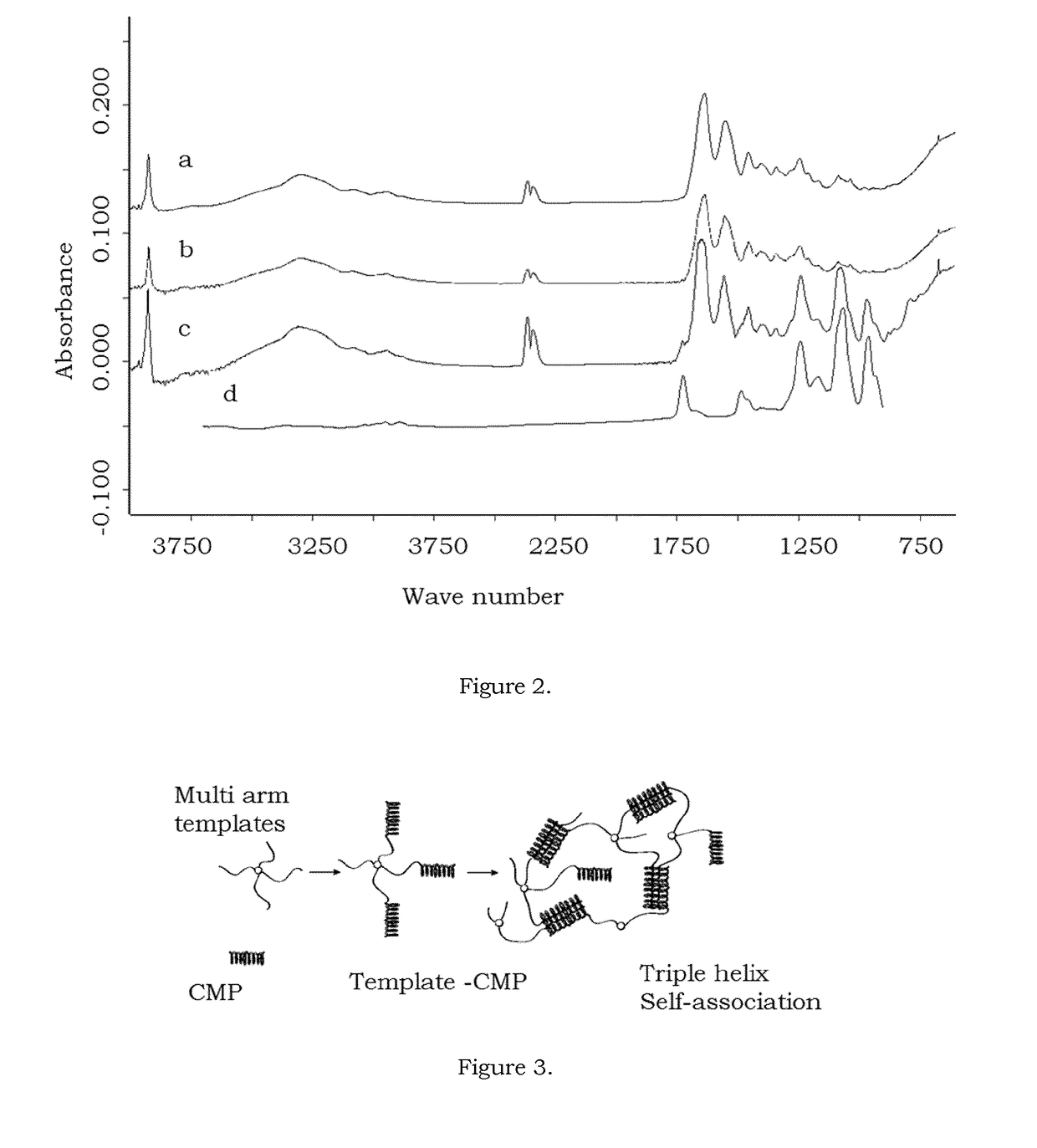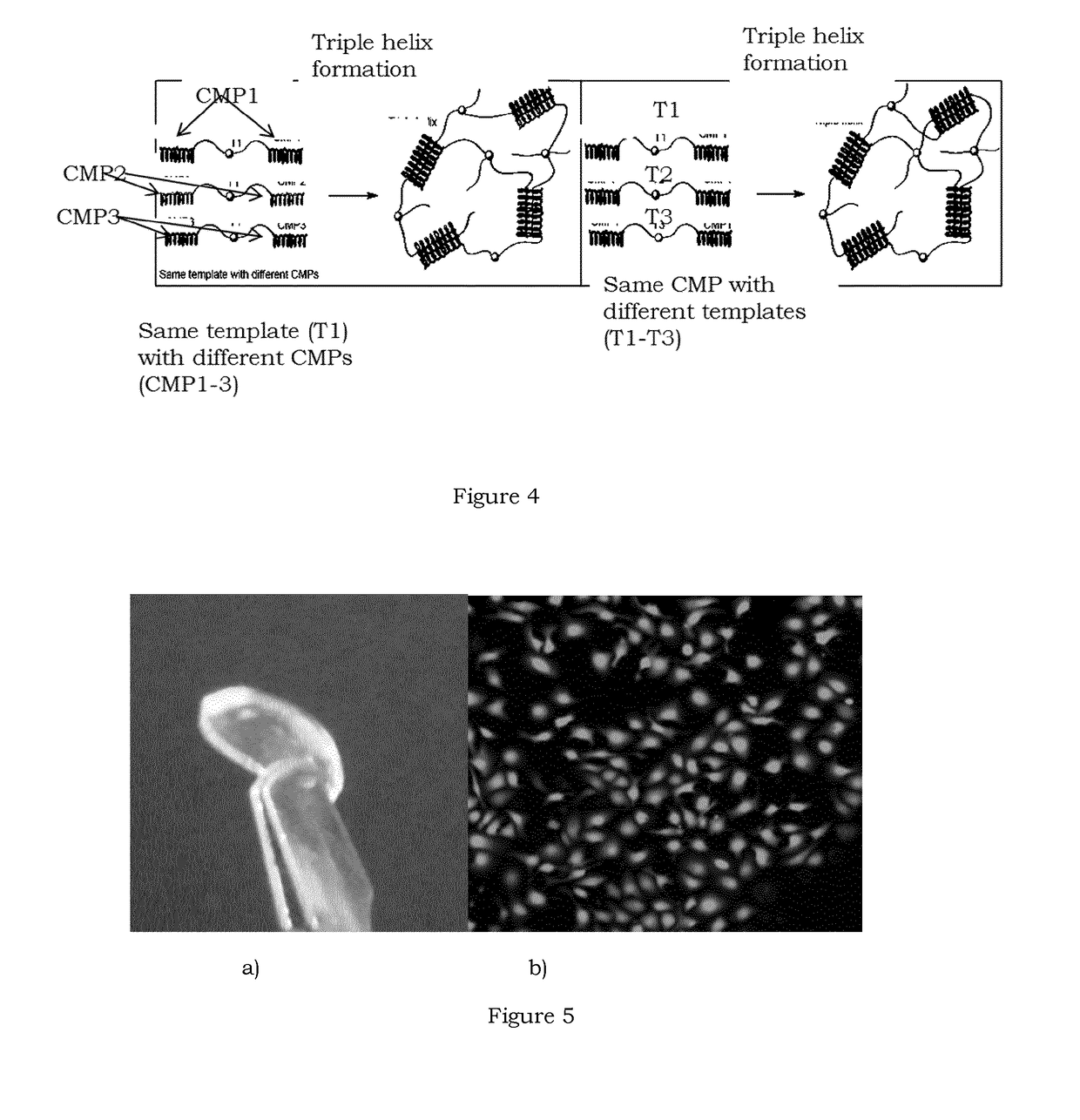Regenerative prostheses as alternatives to donor corneas for transplantation
a corneal transplantation and regenerative technology, applied in the field of regenerative prosthesis, can solve the problems of stem cell transplantation, severe worldwide shortage of donated organs for transplantation, and major problem of immune rejection
- Summary
- Abstract
- Description
- Claims
- Application Information
AI Technical Summary
Benefits of technology
Problems solved by technology
Method used
Image
Examples
example 1
Materials
[0111]A simple matrix material can be fabricated from carbodiimide crosslinked or epoxide or diepoxide, preferably BDDGE, crosslinked or UV crosslinked collagen / modified collagen as known in the art.
example 2
Interpenetrating Networked Materials
[0112]These can be made from collagen-MPC or methcarylated collagen (MA) hybrid.
[0113]Collagen-MPC-co-PEGDA
[0114]0.5 ml of 15% (wt / wt) collagen aqueous solution was taken in the 3 way syringe system and thoroughly mixed with 150 μl of MES (2-(N-morpholino)ethane sulfonic acid) buffer in the syringe system. The pH of collagen solution was adjusted to pH 5±0.5 with 2M NaOH. After that calculated volume of 10% wt / vol of NHS was added followed by MPC solution and PEGDA solution in MES buffer. The Collagen:MPC ratios was 2:1 (wt / wt) and the MPC:PEGDA ratio was 3:1 (wt / wt). Then calculated volume of 4% (wt / vol) APS (ammonium persulfate) in MES and 2% (vol / vol) TEMED (Tetramethylethylenediamine) in MES were added subsequently to the syringe mixing system. The ratio of APS:MPC (wt / wt) was 0.03:1 and the ratio of APS:TEMED (wt / wt) was 1:0.77. Then calculated volume of EDC (5% wt / vol) was added. The molar ratio of Collagen-NH2:EDC was 1:0.7 and EDC:NHS was ...
example 3
Mimetic Peptide Hydrogels
[0122]Short bioactive peptide sequences that are cell-interactive have been used to mimic the properties of the holoprotein. Longer sequences, for example, collagen mimetic peptides (CMPs), are able to self-assemble and a range of these have been developed to model ECM-based peptides.
[0123]In one example a 38 amino acid CMP and a long chain multiarm template (for example 4 arm / 8 arm PEG, PNIPAAm, silk) was used to promote stepwise triple helical self assembly and form hydrogels, see FIGS. 3 and 4. Multiarm templates of appropriate lengths and flexibility will assist CMPs to self assemble into collagen-like triple helical network through well-defined self association; and will also provide the necessary backbone support to maintain the stiffness and mechanical strength to form self-supporting hydrogels. These biomaterials are highly designable, diversifiable with improved mechanical, optical and enzymatic properties. A series of such building blocks using dif...
PUM
| Property | Measurement | Unit |
|---|---|---|
| wavelength range | aaaaa | aaaaa |
| transparent | aaaaa | aaaaa |
| width | aaaaa | aaaaa |
Abstract
Description
Claims
Application Information
 Login to View More
Login to View More - R&D
- Intellectual Property
- Life Sciences
- Materials
- Tech Scout
- Unparalleled Data Quality
- Higher Quality Content
- 60% Fewer Hallucinations
Browse by: Latest US Patents, China's latest patents, Technical Efficacy Thesaurus, Application Domain, Technology Topic, Popular Technical Reports.
© 2025 PatSnap. All rights reserved.Legal|Privacy policy|Modern Slavery Act Transparency Statement|Sitemap|About US| Contact US: help@patsnap.com



